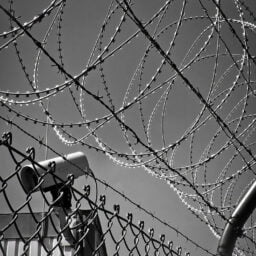
PRE-INDEPENDENCE LAWS
The concept of Juvenile Justice has existed in India since ancient times, although there was hardly any formal law designed specifically for juvenile delinquency. The Apprentices Act of 1850, inspired by the English Law, was the first juvenile legislation passed in our country during the British era. Under this law, petty juvenile offenders were to be treated as apprentices, thereby saving them from prison. The Reformatory Schools Act, 1897 was the next momentous step in this area, which provided for detention of youthful offenders (under the age of 15) in Reformatory Schools instead of sending them to prison. Shortly thereafter, the Madras, Bengal, and Bombay Children Acts were passed in the 1920s which ensured that innocent children who could be easily manipulated into committing crimes do not face the carceral criminal justice system. Separate Juvenile Courts and Residential institutions were established to prevent them from associating with hardened adult criminals which may lead to further felonious attitudes.
The Indian Penal Code (IPC), 1860 passed by the Imperial Legislative Council also laid down regulations for dealing with children under the age of 12. Although adolescents between the age of 12 to 18 were left out.
- Section 82 of IPC states that “Nothing can be an offense which is done by a child under the age of seven”.
- Section 83 of IPC states that “Nothing can be an offense which is done by a child who is between the age group of seven to 12 and has thereby has not attained sufficient maturity to understand the consequences of their actions”.
POST-INDEPENDENCE LAWS
Post-independence in 1953, a new Children’s Bill was dropped in the parliament given other impending emergencies of a newly created state. But when the UN General Assembly adopted the Convention on Child Rights in November 1959 with 78 states (including India), it became imperative for India to adopt its new Children Act in 1960 which met the new international standards for “delinquent or neglected children in need of care, protection, welfare, training, education, and rehabilitation”. These International Conventions have significantly contributed to the issues of Child Rights and prevention of Child Abuse in India. The government also passed a national policy for the welfare of children in 1974.
In the same year, The Code of Criminal Procedure, 1974 provided for the jurisdiction of juvenile delinquency –
- Section 27 of CrPC states that an offence committed by a person under the age of 16 whose punishment does not include death or imprisonment will be dealt with the law which provides rehabilitation of the convicted minors through training – imparting good social values and morals unless the punishment to that is death or imprisonment for life for normal adults.
- Section 437 of CrPC states that a child convicted of any crime can request/demand anticipatory bail which is maintainable in the High Court as well as the Court of Session.
The 1960 Act was applicable only to Union Territories and States had their own laws as juvenile justice fell under the state list. In 1986, Sheela Barse, a social activist, had filed a PIL in order to highlight the gross violations of constitutional and statutory rights of many children across the country in various jails and many shortcomings and loopholes in the juvenile justice system during that time, especially the state-to-state vagaries. In the Sheela Barse Vs. UOI (1) and others cases, the Supreme suggested the Central Government bring in Parliamentary legislations on the subject instead of each state having its own Children’s Act. This case’s order eventually led to the passing of the Juvenile Justice Act, 1986 equally applicable to all children across India for social, economic, and psychological rehabilitation. Provisions with a child-friendly approach were laid down for investigation and trial of the offender under the age of 16.
Section 2 of the 1986 Act defined under the Juvenile system various terms clearly for the efficient disposal of justice. Sections 4 to 12 dealt with the establishment of various boards and authorities for juvenile welfare. Funds for rehabilitation institutions were also established under sections 52, 53, and 54.
RECENT DEVELOPMENTS
In response to the emerging needs in the tiled of the juvenile system of India, the 1986 Act was replaced shortly thereafter with the Juvenile Justice Act, 2000 in line with CRC, the Beijing Rules, and the 1990 Rules. Even this Act was not free from loopholes and thus was amended twice – in 2006, then again in 2011 even though it had fairly consolidated laws on juveniles in conflict with law and children in need of care & protection. Rule 3 of the Juvenile Justice (Care and Protection of Children) Rules, 2007 stated that institutionalization of juveniles must be a measure of last resort only after reasonable inquiry of the crime and that too should be for the minimum possible duration. Section 4 of the Juvenile Justice Act of 2000 dealt with the establishment and constitution of the Juvenile Council and also empowered the state governments to establish a juvenile justice board for a district or group of districts. Section 5 provided for the procedure of working of the boards. Section 6(1) conferred upon the Commission exclusive powers to hear all court proceedings.
Since the cut-off age was made 18 in line with the 1989 UN covenant on child rights and the Juvenile Act of 2000 became particularly controversial for prioritizing the UN needs to the needs of its people. In Raj Singh v. State of Haryana (2), the Supreme Court had stated that a juvenile has to be tried under Juvenile Law, regardless of the nature offense committed. Thus, grave offenders were let away scot-free due to them being under-18, one such important case being the Delhi Gang-Rape Case or the Nirbhaya Case of 2012 where one of the accused had to be tried under the Juvenile Act instead of IPC. According to an Indian Express report, the Lashkar-e-Toiba had suggested it is terrorists in the Mumbai Taj Attack to claim to be under 18 years of age to evade the Indian Penal Code (IPC). Similarly, the lacunae in the Act were used as an advantage by many criminals. While on one side there are innocent children manipulated into committing crimes, living in degraded conditions of lockup in violation of basic human rights, on the other side there are dreaded existing and terrorists who bugger up the legal system to bypass the stringent laws.
Right from the preliminary stages, many legislators were skeptical of considering people between the age group of 16-18 as a juvenile, since adolescents at this age are often mature to understand the consequences of their actions. Thus, contemplating the requirements, the Indian Government once again came up with a fresh law to make up for the previous shortcomings with the help of the Justice Verma Committee Report of 2013 (Committee constituted after the Delhi Gang Rape Case to modify the loopholes of the existing Law).
Thus, the new Juvenile Justice (Care and Protection of Children) Act of 2015 was passed albeit again with several protests.
Salient Features of the latest Act –
- Teenagers committing a heinous crime (punishable by 7 years or more as an adult) must be tried as adults but in juvenile court. The child thus convicted is to be first sent to a rehabilitation home until the age of 21, after which he is to be transferred to prison. Thus, the benefit of being a child has been done away with in case of heinous crimes.
- Section 3 of the Act extensively defines the process of Care and Protection. The rights of the children have been recognized and definitions for “adoption” also have been extensively defined. Disabled Children are to be prioritized.
- A Child Protection Committee must investigate the accused child before producing him for trial.
- Unlike the previous Act, Child Welfare Committee is no longer the final authority in cases of children in need of care and protection. Each State Government must establish a Juvenile Justice Board for each region according to Section 4(1) of the Act.
- Expanding the purview of District Magistrate and Additional District Magistrates in monitoring the various agencies under the Act. Reports are to be submitted to state governments every three months regarding the working of these agencies (Section 54)
CONCLUSION
The idea of the Juvenile Laws is that, without the cooperation of the community, social reintegration of delinquent children cannot be achieved. It calls for the active participation of social workers and NGOs. Even though clearly laid out Laws exist for the protection and care of children, when it comes to practicality, the government has always had a lackadaisical attitude in enforcing the rights of children.
The most recent law has met with substantial public criticism of being more retributive than restorative. It is particularly disadvantageous to children lured into committing heinous crimes as all children may not be mature enough to understand the consequences of their actions. Many studies have found that juvenile crimes are mostly committed by children from poverty-stricken families. With the increasing number of school dropouts and subsequent increase in Juvenile Crime rates, it is high time that our government attempts to provide a more holistic learning atmosphere to all deprived children so that they grow into productive citizens instead of becoming a liability to the nation.
Author(s) Name: Suchetana Chakraborty (Institute of Law, Nirma University)
References:
- https://indiankanoon.org/doc/525548/#:~:text=PETITIONER%3A%20SHEELA%20BARSE%20%26%20ORS.,Whether%20fundamental%20right%20of%20accused.
- https://indiankanoon.org/doc/11582170/
- http://www.legalservicesindia.com/article/387/Juvenile-Justice.html#:~:text=Ancient%20India%20though%20governed%20by,specially%20dealing%20with%20juvenile%20delinquency.&text=%5B3%5D%20The%20Apprentices%20Act%20was,deal%20with%20children%20in%20India.
- https://www.google.com/url?sa=t&source=web&rct=j&url=http://bathindapolice.in/files/JuvenileJusticeAct1986.pdf&ved=2ahUKEwjBvajMkevvAhXs4zgGHTy1CooQFjACegQIBBAC&usg=AOvVaw1Ph6KaBZ8N2cJUO1ofHwug
- https://www.google.com/url?sa=t&source=web&rct=j&url=http://odishapolicecidcb.gov.in/sites/default/files/Juvenile%2520Justice%2520%2528Care%2520And%2520Protection%2520Of%2520Children%2529%2520Act%252C%25202000.pdf&ved=2ahUKEwjjycf17OvvAhU1zjgGHf1aC3YQFjAXegQIMBAC&usg=AOvVaw0yHNEQ8H5aMIWoAD7d-ah3
- https://www.google.com/url?sa=t&source=web&rct=j&url=http://cara.nic.in/PDF/JJ%2520act%25202015.pdf&ved=2ahUKEwjjycf17OvvAhU1zjgGHf1aC3YQFjAkegQIMxAC&usg=AOvVaw2ZjYWS9tYzruL8FDltSfPR
- https://blog.ipleaders.in/introduction-overview-juvenile-justice-care-protection-act-2015/amp/
- http://www.legalservicesindia.com/article/2482/The-Juvenile-Justice-Care-and-Protection-of-Children-Act,-2000-and-The-Juvenile-Justice-Care-and-Protection-of-Children-Act,-2015.html
















